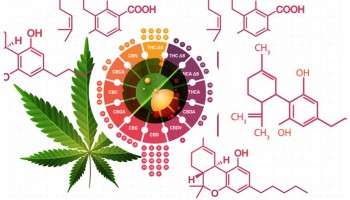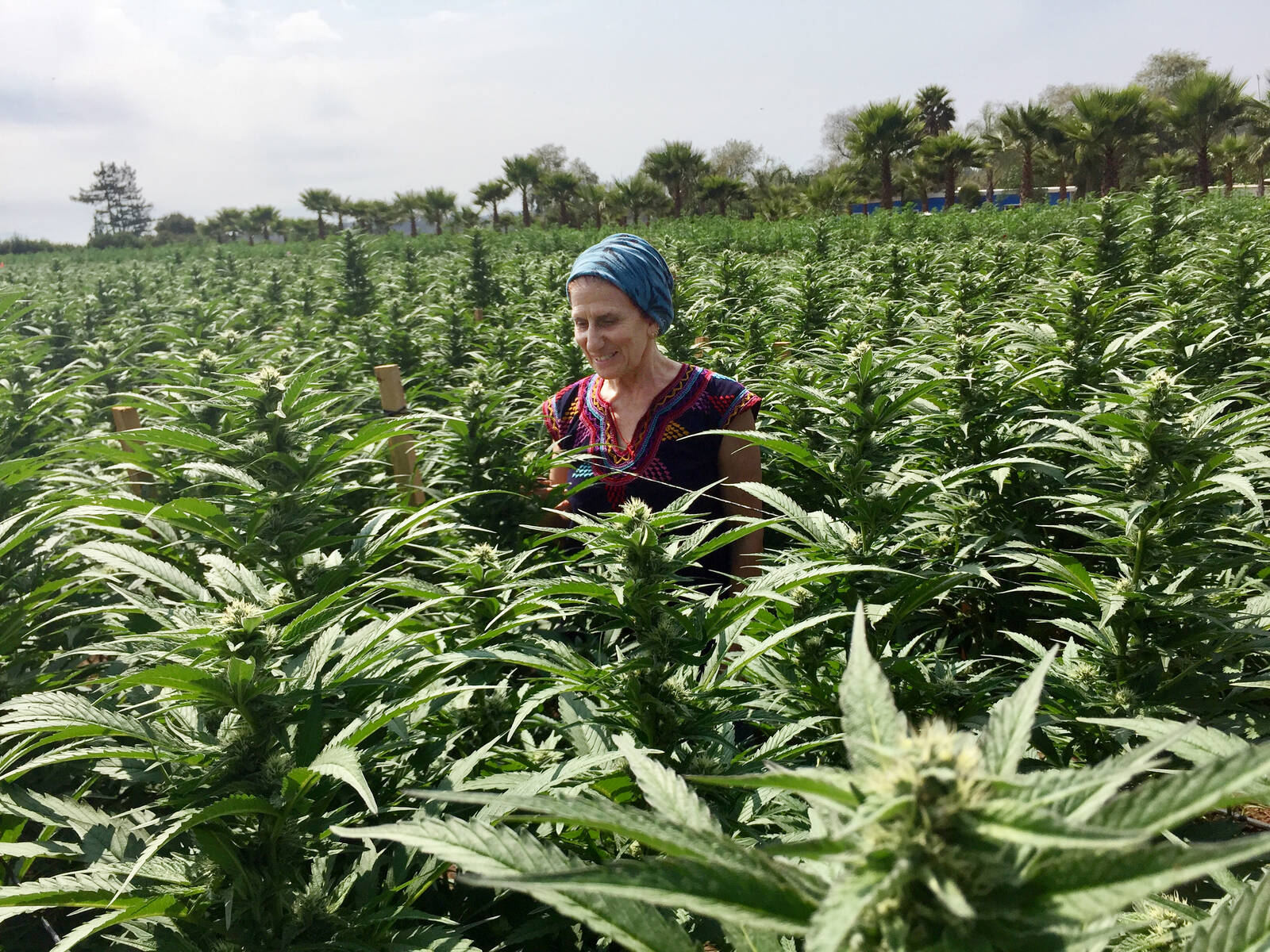
Cannabichromene, a phytocannabinoid that has many health benefits, is what you should be familiar with. This phytocannabinoid may be responsible for the pain-killing effect of cannabis. This article discusses the current research and potential benefits of this plant compound. Learn how it works and what it does to prevent cancer and encourage neurogenesis.
Cannabichromene, a phytocannabinoid, is one example.
Cannabichromene a phytocannabinoid derived from plants and that is non-toxic has received a lot of attention in recent years. Although it was first discovered in 1966, it has unique medical benefits. It is part of the plant's aerial parts such as its leaves and flowers. Cannabichromene can be made from cannabigerolic, which is the mother cannabinoids.

It interacts with cannabinoid-receptors
It is essential to study the cannabichromenes found in cannabis in order to fully understand the polypharmacology and physiology of cannabinoid receptors. These phytomolecules differ in their receptor affinity, ligand bias, and specific activities. In vitro studies were conducted to determine the properties of plant-derived and endogenous cannabisoids.
It is a fighter against cancer
Cannabichromene or CBC has been shown to be a powerful anticancer agent. This compound is derived directly from cannabis plants. When it passes through the enzyme CBC Synthase, it becomes cannabichromene-carboxylic acid (CBC). Studies also suggest that CBC has mild to moderate antibacterial and antifungal effects. It has also been shown to inhibit tumor growth.
It promotes neurogenesis
One of the primary non-psychoactive cannabinoids in marijuana, cannabichromene, is also known as CBC. It encourages neurogenesis, a process that is crucial to brain growth and memory. Unfortunately, while it helps form new brain cells, neurogenesis also slows down as we get older. So, by stimulating neurogenesis, marijuana may help regenerate the cells that are necessary for cognitive function. In addition to helping regenerate brain cells, cannabichromene can also aid in neurological cell health growth and repair.

It could have potential medical applications
Cannabichromene, or CBC, is a substance found in cannabis. It can be used in a variety of medical applications, including anti-acne properties. It has an extremely high purity of 95%. CBC was found to have powerful anti-inflammatory properties in laboratory experiments. It decreased sebaceous inflammation and reduced arachidonic acid production, which is a necessary substance for lipogenesis. It is possible that CBC could be used as an anti-acne treatment. However, further research is needed to confirm its effectiveness.
FAQ
Which countries produce the highest quality CBD?
The United States produces most CBD products.
Canada, Australia New Zealand, Israel, and New Zealand all produce high-quality CBD products.
Is the CBD market saturated?
CBD is seeing a steady growth rate of 25 percent annually. This growth will continue at least five years. According to industry projections, it will grow from $2 billion to $5 billion by 2020.
Two companies are currently dominating the CBD market - GW Pharmaceuticals & Canndoc Ltd. Both are focused on developing pharmaceutical-grade products. But they have not been particularly successful. Both are struggling to get traction on market.
Cannabidiol (CBD), an extract from cannabis, contains less than 0.3% THC. It doesn't produce any psychoactive effects. It can be used to treat epilepsy, and other medical conditions. It is also used to supplement a diet.
There are many varieties of CBD products. Some CBD products can be made with whole plant extracts and others, such as CBD.
All these products have in common that they contain low levels of THC.
They are thus legal under US federal legislation. You still need to comply with local laws when you sell CBD products. You should always verify your state's regulations for the sale of CBD products.
There are also several states that CBD products are prohibited. These states include California, Colorado and Mississippi, Missouri. New York, North Carolina. Ohio. Oklahoma. Oregon. Rhode Island. South Dakota. Texas. Utah. Virginia. Washington.
You will want to stay clear of CBD products if you are from one of these states.
What is the future in CBD?
The future looks bright for CBD. It is clear why so many people are getting on board with this industry. It's easy to see why this market is growing exponentially, with CBD products generating over $1 billion in global sales.
Statista reports that in 2019, global sales of CBD (cannabidiol) are expected to exceed $22.4 Billion. That's almost 200% more than in 2018!
The CBD market is also predicted to grow at a compound annual growth rate of 22.5%, which equates to nearly $6.8 billion in revenue by 2022.
This is good news for both companies that want to enter the CBD market and those who are already in this sector. We must remember that the CBD market still has a lot of work ahead.
Where can I buy CBD products?
You can purchase CBD online or at local retail stores. Online retailers often offer better deals. You will find that many websites sell CBD products made using industrial hemp, which contains less than 0.3% THC.
If you prefer to shop locally, look for brick-and-mortar businesses that specialize in selling CBD products.
A lot of states have passed laws that allow consumers to purchase CBD products without the need for a prescription. CBD products may be available at your local pharmacy if the state you reside is one of them.
CBD products may be delivered right to your doorstep.
Statistics
- As a substance that was federally illegal before the passage of the 2018 Farm Bill, hemp-derived cannabinoids with no more than 0.3% THC still face a regulatory grey area. (forbes.com)
- A recent study [161] also found that in vitro CBD treatment (i.e., ≤ 2 h exposure to 10 μM) induced ~40% vasorelaxation in isolated (pre-constricted) (ncbi.nlm.nih.gov)
- HR −16 mmHg; 95% CI −26, −6; I2 = 92%) (ncbi.nlm.nih.gov)
- OralWhere HED is the human equivalent dose, and Km is a correction factor estimated by dividing the average body mass (BM) of the species (60, 0.020, and 0.150 kg for 11 humans, mice, and rats, respectively) and by its surface area (see: Nair et al. (ncbi.nlm.nih.gov)
- While the primary injury may not be treatable, interventions that attenuate secondary sequelae are likely to be of benefit [203].Only one study (ncbi.nlm.nih.gov)
External Links
How To
What are the common issues in the CBD industry?
The market for CBD is growing at an astonishing rate. But, businesses who want to enter this market still face numerous challenges. There are many challenges facing businesses looking to enter this space, including low consumer awareness, high costs of entry and limited access to capital.
Many people don't know much about CBD or how it works. This makes it difficult for consumers to make informed decisions on whether or not they want CBD products.
CBD companies are heavily dependent on word-of–mouth marketing. This can be costly as it involves advertising and staffing to promote the brand.
The high production costs are another issue that new entrants to the CBD industry face. It is very expensive to obtain the raw materials required for CBD products. To make CBD oil, hemp must be grown in certain climates and soil types.
It takes approximately $1,000 per acre to grow enough hemp to process into CBD oil. Many small farmers can't afford to begin.
A lack of capital access is another problem that CBD market newcomers face. Many people who want to start a business are discouraged by banks due to the stigma associated with the industry.
Last but not least, there is regulatory uncertainty regarding the sale and distribution of CBD products. There are currently not clear guidelines as to how CBD products should marketing.
Some states have passed legislation restricting the sale of CBD products, but this has yet to become national policy.
Only Nevada and Maine have so far legalized recreational marijuana.
Massachusetts and Michigan have considered similar measures.
These changes could increase competition among CBD manufacturers.
These factors have led many entrepreneurs to choose to work remotely rather than starting a physical business.